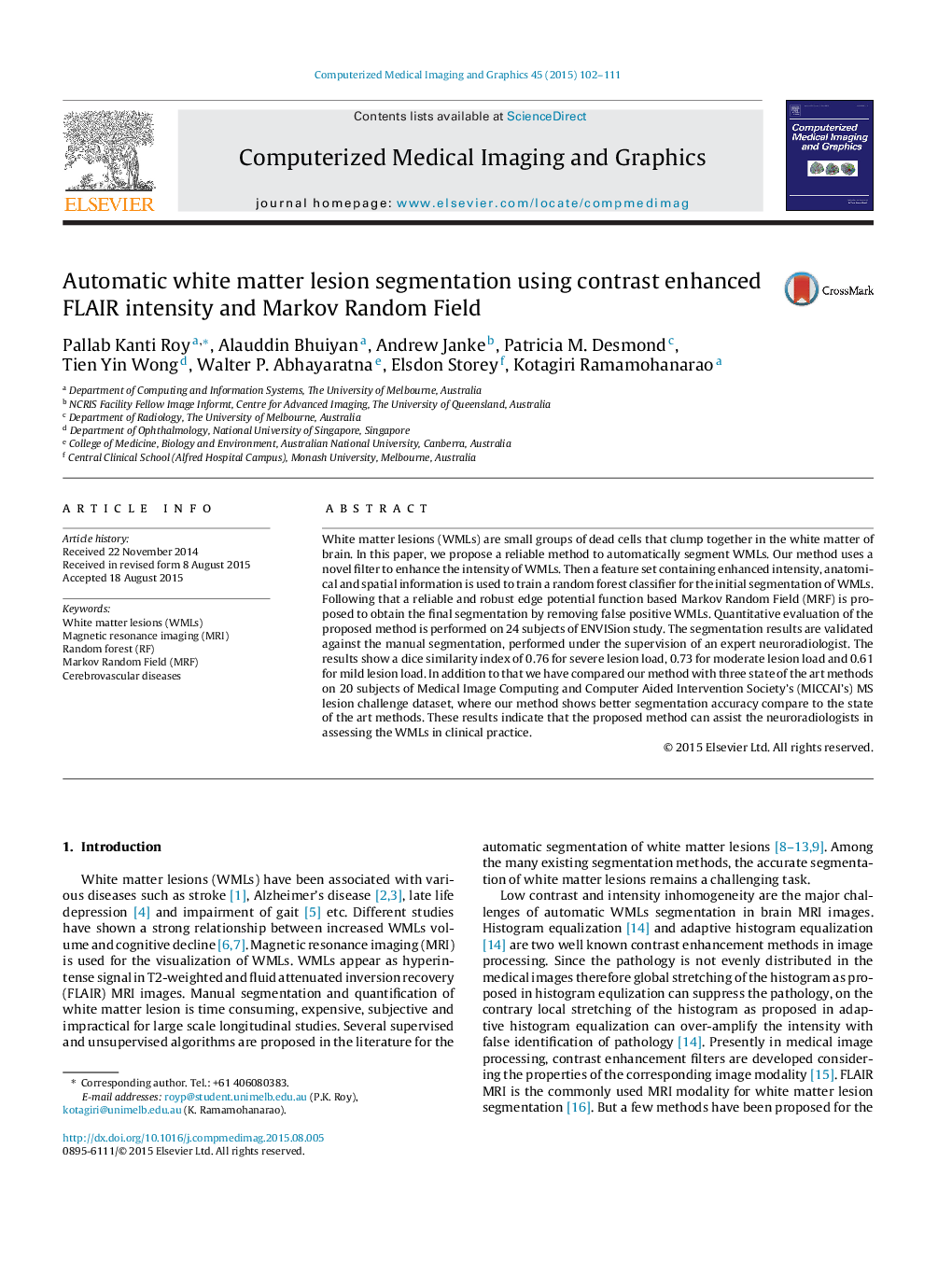| Article ID | Journal | Published Year | Pages | File Type |
|---|---|---|---|---|
| 6920323 | Computerized Medical Imaging and Graphics | 2015 | 10 Pages |
Abstract
White matter lesions (WMLs) are small groups of dead cells that clump together in the white matter of brain. In this paper, we propose a reliable method to automatically segment WMLs. Our method uses a novel filter to enhance the intensity of WMLs. Then a feature set containing enhanced intensity, anatomical and spatial information is used to train a random forest classifier for the initial segmentation of WMLs. Following that a reliable and robust edge potential function based Markov Random Field (MRF) is proposed to obtain the final segmentation by removing false positive WMLs. Quantitative evaluation of the proposed method is performed on 24 subjects of ENVISion study. The segmentation results are validated against the manual segmentation, performed under the supervision of an expert neuroradiologist. The results show a dice similarity index of 0.76 for severe lesion load, 0.73 for moderate lesion load and 0.61 for mild lesion load. In addition to that we have compared our method with three state of the art methods on 20 subjects of Medical Image Computing and Computer Aided Intervention Society's (MICCAI's) MS lesion challenge dataset, where our method shows better segmentation accuracy compare to the state of the art methods. These results indicate that the proposed method can assist the neuroradiologists in assessing the WMLs in clinical practice.
Keywords
Related Topics
Physical Sciences and Engineering
Computer Science
Computer Science Applications
Authors
Pallab Kanti Roy, Alauddin Bhuiyan, Andrew Janke, Patricia M. Desmond, Tien Yin Wong, Walter P. Abhayaratna, Elsdon Storey, Kotagiri Ramamohanarao,
